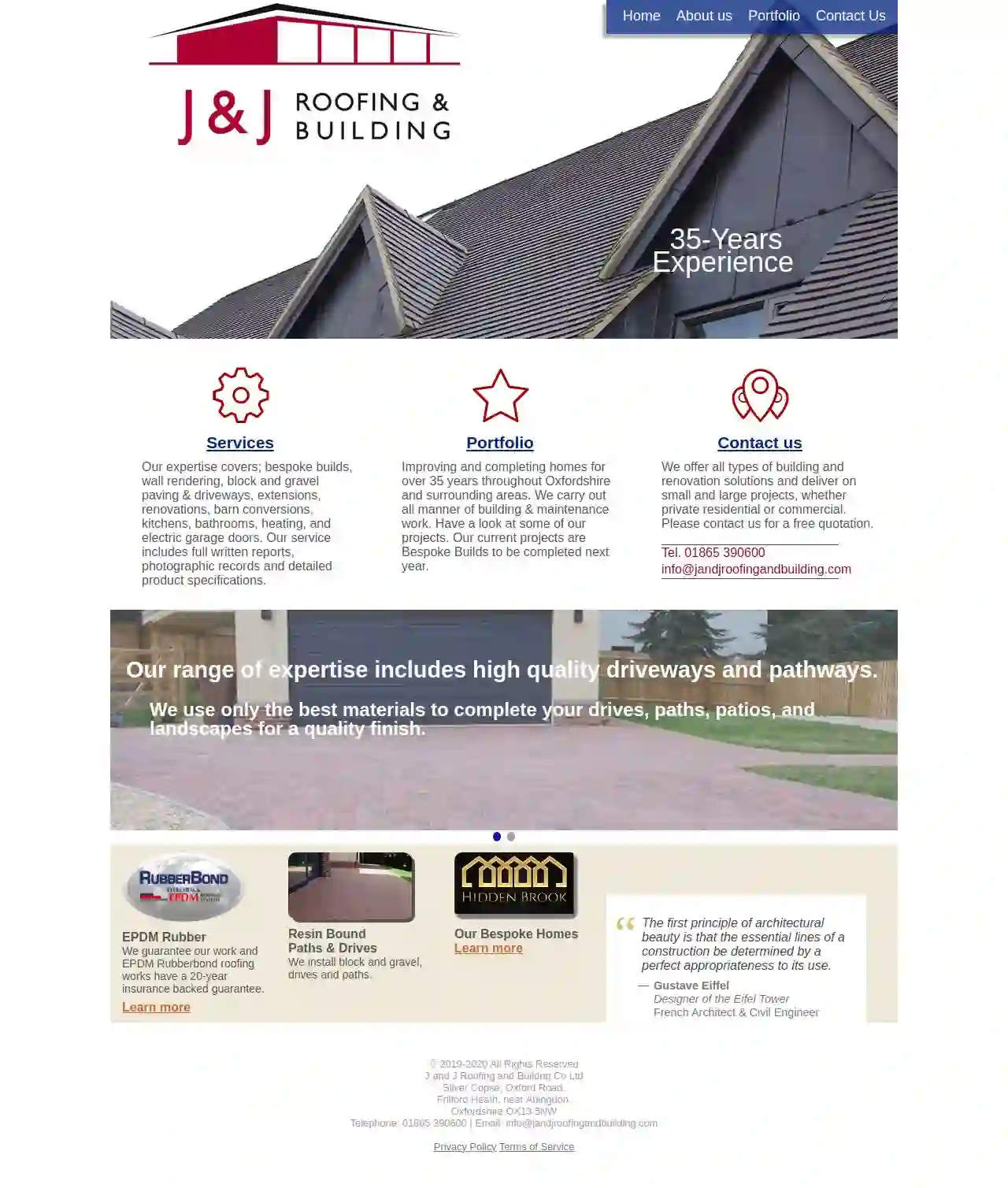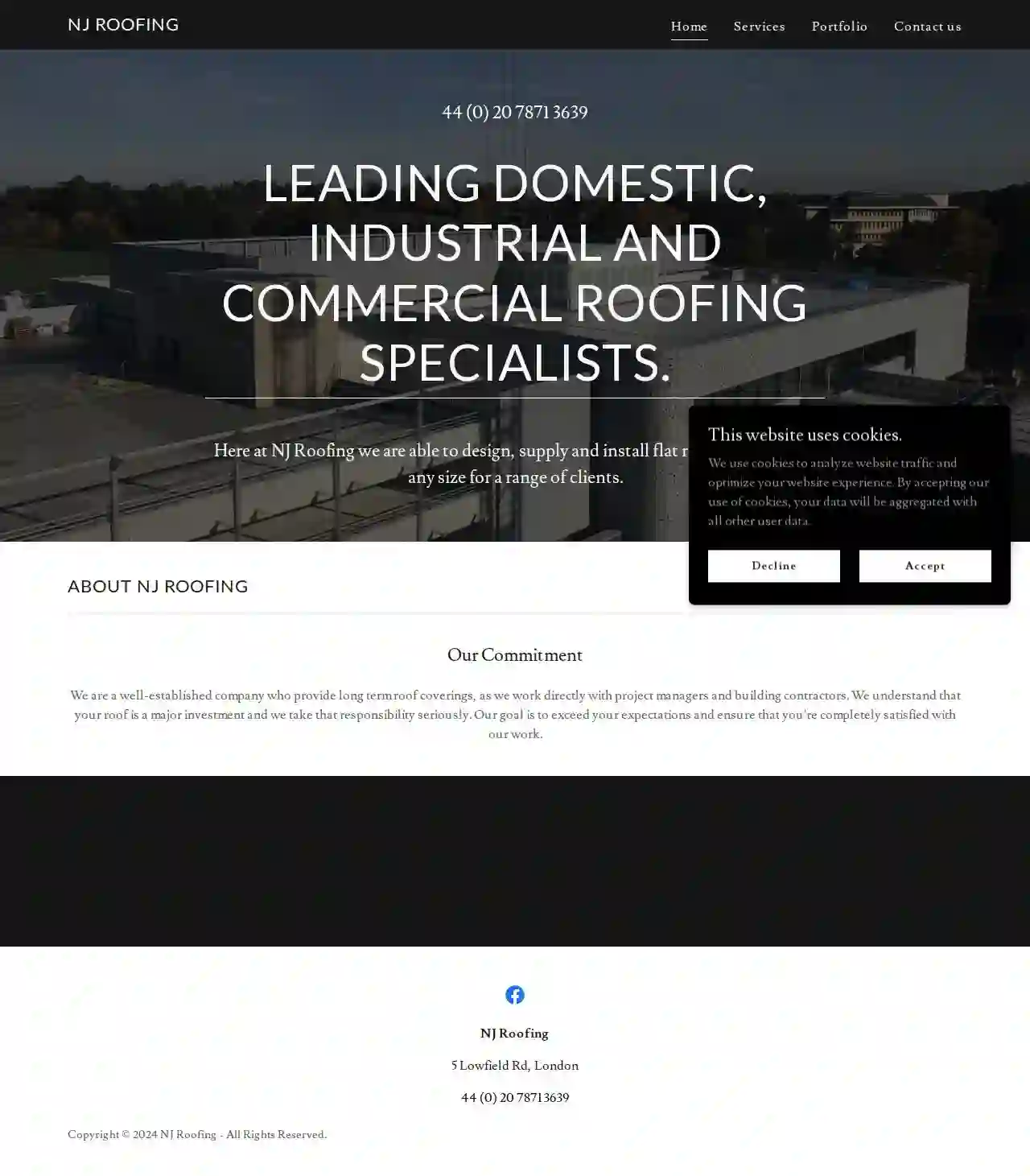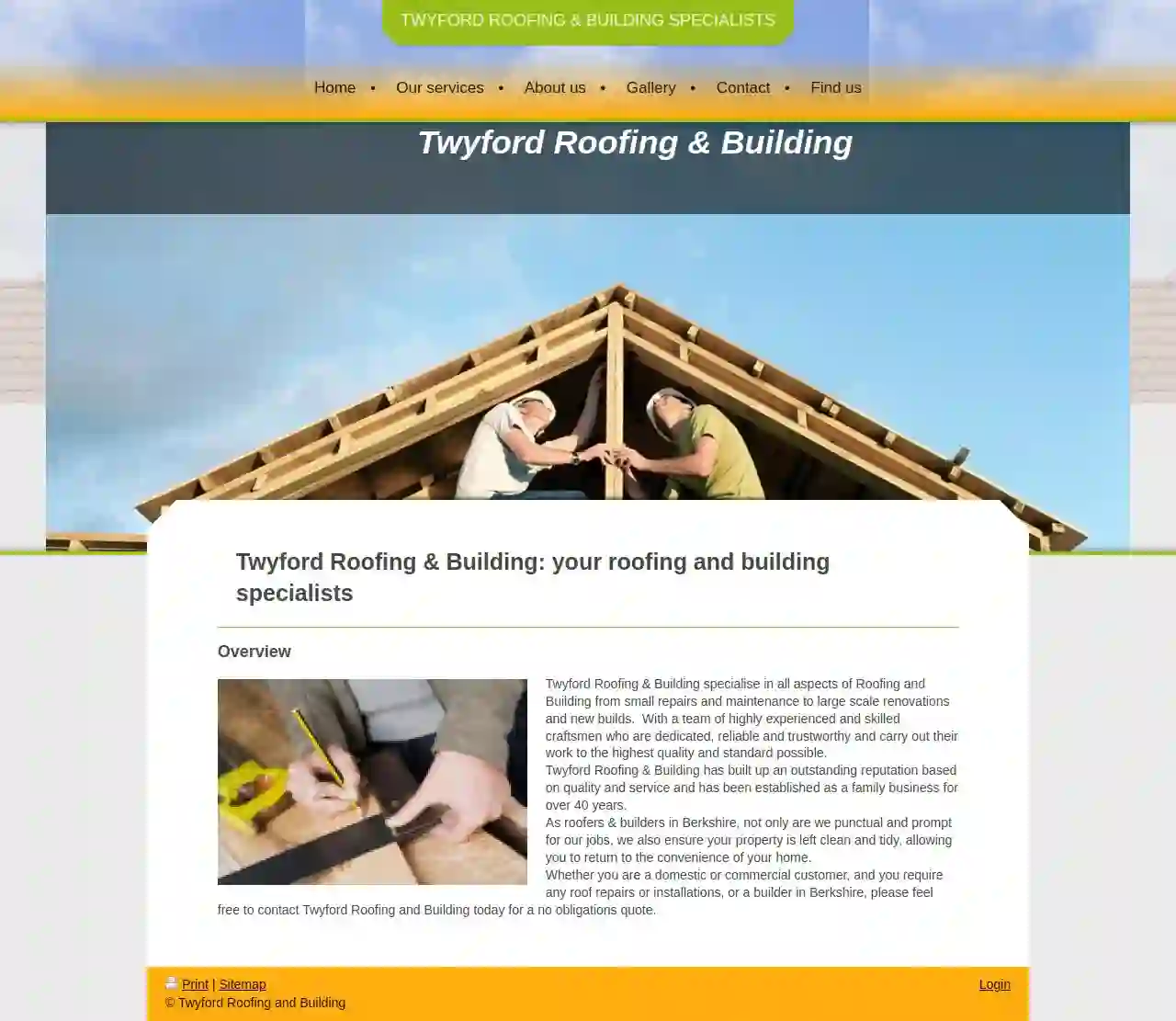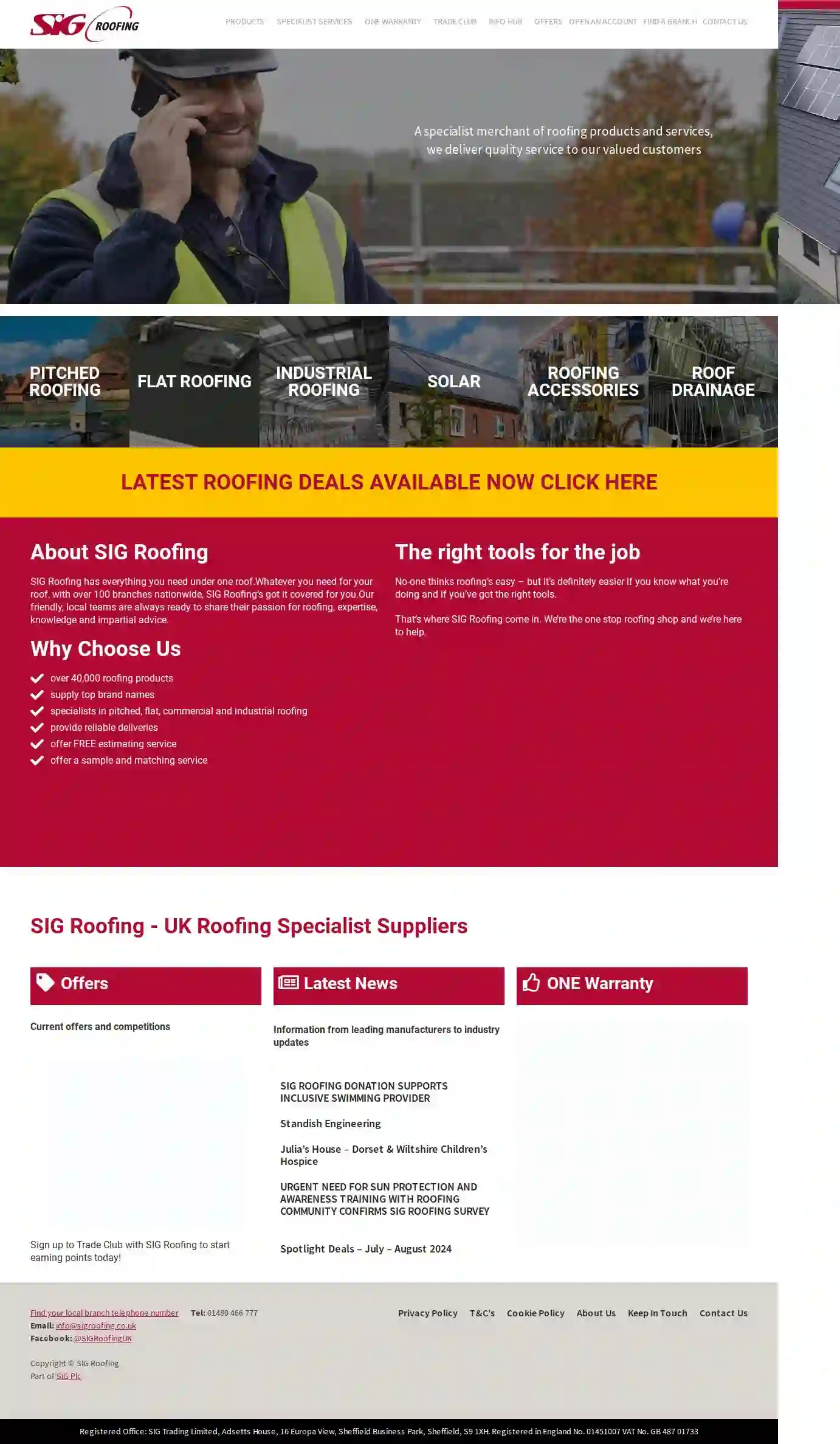Roofing Companies Newbury
Find the best Roofing Companies in Newbury
Get up to 3 Roofing Contractor quotes for your project today! Compare profiles, reviews, accreditations, portfolio, etc... and choose the best deal.

J&J Roofing and Building Co. Ltd.
4.52 reviewsSilver Copse, Oxford Road, Frilford Heath, Oxford, OX13 5NW, GBJ & J Roofing and Building is a family-run business with over 35 years of experience in the building and construction industry. We pride ourselves on providing a high standard of workmanship and customer service. Our team of skilled tradesmen are fully qualified and insured, and we are committed to delivering projects on time and within budget. We offer a wide range of services, including bespoke builds, extensions, renovations, roofing, loft conversions, barn conversions, kitchens, bathrooms, heating, and electric garage doors. We also specialise in driveways, pathways, and wall rendering. We work closely with our clients to understand their needs and requirements, and we will always go the extra mile to ensure that they are satisfied with the finished product.
- Services
- Why Us?
- Gallery
Get Quote
G P Roofing
Unit 1, The Business Centre, London Road, Andover, SP10 1AA, GBRealty Roofing is a highly-efficient, reliable roofing contractor providing first class roofing services in Hampshire, committed to putting you, the customer, first. We will include you in the full roofing process by giving you the opportunity to view any of the work done by our roofers in Hampshire upon its completion, using before and after picture evidence. As part of our high-quality, reliable service we offer a 15 year guarantee with all new roofs we install. We endeavour to deliver on our commitments on time and within budget, using only the best technology, tools and equipment available. We also offer a guaranteed, comprehensive after sales service to answer any questions you may have. Realty Roofing is a highly-efficient, reliable roofing company in Hampshire. We have become highly successful within the region due to outstanding recommendations received from past clients. We provide cost effective roofing services in Hampshire for all your exterior needs. Using the latest equipment our Hampshire roofers take pride in their work and strive to provide a service that is professional, reliable and delivered on time. Our promise to you is this: Our roofers are all very friendly and approachable. We promise to try our best to work within your budget where possible. We will go through everything with you regarding proposed work to be undertaken, and only when you are completely satisfied will we commence work. We will do a very professional roofing job and answer all your queries.
- Services
- Why Us?
- Gallery
Get Quote
Reading Roofing Services
51 reviewsReading, GBAPS Roofing Services offers the full range of new roofs to properties and companies across Reading and the surrounding areas. Our qualified roofers have been replacing and installing all types of new roofs for many years and can offer help and advice with free surveys and quotes. If you think you have a leaking roof or may need a completely new roof, then we can help. Among the leading roofing companies in Reading, we can fix any issue to restore the comfort and security of your roof and property. We work hard to achieve customer satisfaction and we are highly motivated to carry out our new roofing services to the highest possible standards. We have a fair pricing policy, and we will be your best choice for new roofs in Reading. For a new roof quote near Reading call 01189 680663 today.
- Services
- Why Us?
- Gallery
Get Quote
Tombs Roofing
51 reviewsCompton, Newbury, GBWe are a father and son family run business with over 40 years of experience combined. We cover all aspects of roofing to an extremely high standard, with pride taken in every job, big or small. Based in Newbury and the surrounding areas, Tombs Roofing are a professional, reliable, family-run roofing company with unrivalled expertise in the industry. Drawing on all of our experience, we focus on providing all types of roofing repairs and maintenance, giving customers outstanding quality service and the highest finish which is made to last.
- Services
- Why Us?
- Our Team
- Testimonials
- Gallery
Get Quote
NJ ROOFING
51 reviews5 Lowfield Rd, London, GBLeading domestic, industrial and commercial roofing specialists. Here at NJ Roofing we are able to design, supply and install flat roofing projects at any size for a range of clients. About NJ Roofing Our Commitment We are a well-established company who provide long term roof coverings, as we work directly with project managers and building contractors. We understand that your roof is a major investment and we take that responsibility seriously. Our goal is to exceed your expectations and ensure that you're completely satisfied with our work.
- Services
- Why Us?
- Our Team
- Gallery
Get Quote
Twyford Roofing & Building
51 reviewsGBTwyford Roofing & Building specialise in all aspects of Roofing and Building from small repairs and maintenance to large scale renovations and new builds. With a team of highly experienced and skilled craftsmen who are dedicated, reliable and trustworthy and carry out their work to the highest quality and standard possible.Twyford Roofing & Building has built up an outstanding reputation based on quality and service and has been established as a family business for over 40 years. As roofers & builders in Berkshire, not only are we punctual and prompt for our jobs, we also ensure your property is left clean and tidy, allowing you to return to the convenience of your home.Whether you are a domestic or commercial customer, and you require any roof repairs or installations, or a builder in Berkshire, please feel free to contact Twyford Roofing and Building today for a no obligations quote.
- Services
- Why Us?
- Gallery
Get Quote
Moss End Roofing Ltd
4.712 reviewsMoss End Garden Centre, Maidenhead Road, Warfield, RG42 6EJ, GBWith over 30 years of experience, Moss End Roofing is your local expert for all your roofing needs. We handle everything from full installations to urgent repairs, ensuring your project is completed to the highest standard, no matter the size or complexity. Our team is dedicated to providing competitive prices, no-obligation quotes, prompt and reliable service, and complete customer satisfaction. We're here to listen to your requirements and offer professional advice every step of the way.
- Services
- Why Us?
- Accreditations
- Our Team
- Testimonials
- Gallery
Get Quote
Valion Roofing
56 reviewsGBAt Valion Roofing, we pride ourselves on delivering exceptional quality work at competitive prices. Our experienced team of professionals is dedicated to ensuring your satisfaction with our services. We offer a range of roofing solutions to meet your needs, from repairs to installations. Contact us today to learn more about how we can help you with your roofing needs.
- Services
- Why Us?
- Testimonials
- Gallery
Get Quote
SIG Roofing Oxford
4.121 reviewsOxford, GBSIG Roofing is a specialist merchant of roofing products and services, delivering quality service to our valued customers. Established for over 40 years – with branches throughout the UK from Inverness to Plymouth. We have everything you need under one roof. Whatever you need for your roof, with over 100 branches nationwide, SIG Roofing’s got it covered for you. Our friendly, local teams are always ready to share their passion for roofing, expertise, knowledge and impartial advice.
- Services
- Why Us?
- Gallery
Get Quote
GS Roofing
12 Hollow Lane, Reading, RG2 9BT, GBGS Roofing is a family-run roofing company based in Reading, Berkshire, with over 15 years of experience providing professional roofing solutions. We cover Reading, Henley on Thames, and the surrounding areas, offering a wide range of services including new roofs, flat roofs, roof repairs, chimney work, guttering, fascias, and more. We pride ourselves on our reliability, honesty, and expertise, ensuring a fantastic result every time. As members of Checkatrade and the Confederation of Roofing Contractors, we are committed to delivering high-quality workmanship and customer satisfaction. We are fully insured and hold Construction Skills Certification Scheme (CSCS) cards, providing you with peace of mind.
- Services
- Why Us?
- Accreditations
- Our Team
- Testimonials
- Gallery
Get Quote
Over 12,314+ Roofing Companies onboarded
Our roofing contractors operate in Newbury & surrounding areas!
Roofyng.co.uk has curated and vetted the Best Roofers arround Newbury. Find a top & reliable pro today.
Frequently Asked Questions About Roofing Companies
- Metal roofs: Reflect sunlight, reducing cooling costs.
- Tile roofs: Offer thermal mass, regulating temperature.
- Cool roofs: White or light-colored roofs with high solar reflectance.
- Green roofs: Vegetated roofs providing insulation and reducing heat absorption.
- Age: If your roof is nearing or exceeding its expected lifespan, it's wise to consider replacement.
- Multiple Leaks: Several leaks or leaks that reappear after repairs suggest a widespread problem.
- Extensive Damage: Large areas of damaged, missing, or deteriorated roofing materials might be too costly or difficult to repair effectively.
- Sagging or Structural Issues: Sagging, deflection, or other structural issues indicate a compromised roof that needs replacement.
- Granule Loss (Asphalt Shingles): Significant granule loss indicates weathering and reduced protection.
- Curling or Buckling Shingles: Signifies age or improper ventilation.
- Increased Energy Bills: A poorly insulated roof can lead to higher heating and cooling costs.
- Sagging or Pulling Away: Gutters that are sagging, pulling away from the house, or visibly damaged need repairs or replacement.
- Overflowing Water: If water overflows during rain, it indicates clogs or inadequate drainage.
- Visible Debris: Leaves, twigs, and other debris accumulated in the gutters obstruct water flow.
- Water Damage: Water stains or damage to siding or foundation near the gutters suggest overflow.
- Plant Growth: Plants or moss growing in the gutters indicate standing water and the need for cleaning.
What is fascia, and why is it important?
What are some energy-efficient roofing options?
What are the signs that my roof needs to be replaced?
How can I tell if my gutters need to be cleaned or repaired?
What is fascia, and why is it important?
What are some energy-efficient roofing options?
- Metal roofs: Reflect sunlight, reducing cooling costs.
- Tile roofs: Offer thermal mass, regulating temperature.
- Cool roofs: White or light-colored roofs with high solar reflectance.
- Green roofs: Vegetated roofs providing insulation and reducing heat absorption.
What are the signs that my roof needs to be replaced?
- Age: If your roof is nearing or exceeding its expected lifespan, it's wise to consider replacement.
- Multiple Leaks: Several leaks or leaks that reappear after repairs suggest a widespread problem.
- Extensive Damage: Large areas of damaged, missing, or deteriorated roofing materials might be too costly or difficult to repair effectively.
- Sagging or Structural Issues: Sagging, deflection, or other structural issues indicate a compromised roof that needs replacement.
- Granule Loss (Asphalt Shingles): Significant granule loss indicates weathering and reduced protection.
- Curling or Buckling Shingles: Signifies age or improper ventilation.
- Increased Energy Bills: A poorly insulated roof can lead to higher heating and cooling costs.
How can I tell if my gutters need to be cleaned or repaired?
- Sagging or Pulling Away: Gutters that are sagging, pulling away from the house, or visibly damaged need repairs or replacement.
- Overflowing Water: If water overflows during rain, it indicates clogs or inadequate drainage.
- Visible Debris: Leaves, twigs, and other debris accumulated in the gutters obstruct water flow.
- Water Damage: Water stains or damage to siding or foundation near the gutters suggest overflow.
- Plant Growth: Plants or moss growing in the gutters indicate standing water and the need for cleaning.